The deep pink almost bright red skin of the dragon fruit may be a tad bit off-putting for many. From afar, the green parts of its skin may seem like thorns—surely the dragon fruit could easily be misconstrued as poisonous and inedible. However, studies from all around the globe have shown that the dragon fruit is more than an ornamental flower of a cactus. This beautiful mysterious fruit offers a wide range of health and economic benefits once explored.

Growing in tropical areas in Asia and Latin America, the dragon fruit (Genus: Hylocereus) is also known as pitaya or pitahaya in many countries. Other names include red pitaya, “dragon pearl fruit”, “green dragon”, “dragon crystal”, and strawberry pear. This fruit grows from a cactus plant that either grows from the ground or climbs onto trees, which could reach up to 20-feet long when full grown. The fragrant flower of the dragon plant only blooms at night, and wilts during the morning—hence, the name “Night blooming Cereus”, “Belle of the Night”, “Queen of the Night”, and “Moonflower”. Apart from these exceptional characteristics, the fruit itself offers even more promise.
The dragon plant matures within a year and starts to bear fruit around the same time , with an average of 5–6 cycles of harvest each year. The football-shaped dragon fruit weighs an average of 150–600 grams with its outer skin either red or yellow in color depending on its variety. The flesh of the dragon fruit is white with tiny black edible seeds, with a texture much like that of a kiwi—soft, juicy, and a bit grainy, with a sweet-citrusy taste.
Apart from the culinary uses of this night blooming cactus, it also offers countless medicinal properties. One serving provides 15 percent of the daily requirement for Vitamin C, 10 percent for potassium, 8 percent for iron, and 1 percent for calcium. Research have shown that consuming dragon fruit could prevent certain cancers, jumpstart weight loss, control blood glucose level for diabetes, thwart memory loss, and facilitates faster healing process of wounds and other lesions.
Dragon fruit in the Philippines
Pitaya growers continue to increase throughout the country, from the provinces of Cavite, Ilocos, Bicol, all the way to Davao, and even a couple of commercial planting farms in Pangasinan, Nueva Ecija and Quezon. Its’ reputation of profitability continue to spread, and more farmers are committed to the production of dragon fruit. Selling expensively in the local market, roughly Php 150–180 per kilo and even higher abroad, dragon fruit is tagged by the Department of Agriculture – Bureau of Agricultural Research (DA-BAR) as a money crop. With little investment capital and maintenance for growing pitaya and producing dragon fruit, DA-BAR pushes on to discovering planting techniques to increase the productivity of the pitaya cactus.
In the Philippines, two main varieties are grown and the most common is the one with the white flesh, Hylocereus undatus, followed by a darker red-fleshed dragon fruit, Hylocereus costaricensis (some authors refer to it as Hylocereus polyrhizus). The former grows bigger but is less sweet than the latter. There is another less familiar dragon fruit called the yellow pitahaya or yellow pitaya, Hylocereus megalanthus (some authors also call it Selenicereus megalanthus) which has a yellow-skinned thorny fruit with white flesh and is not as common in commerce as the other varieties. It is said to be the sweetest.
Cultivating pitaya cactus is quite basic, either by stem cutting or through seeds. As it is a cactus, growing it could be challenging but not impossible. The crop needs only little hydration, but attention must be put for defenses against pests and diseases to maximize its productivity. Its season of flowering runs from May through to December and the dragon fruits are harvested 30–50 days after flowering.
Apart from pitaya cactus farms, dragon fruits are also grown in backyard gardens of both rural and urban dwellers in the Philippines. Originally thought of only as ornamental plants, dragon fruits is making itself known to homemakers. Eaten fresh and raw, dragon fruit is now also made into jams, mixed in cocktails, or combined with other ingredients to make salads.
Promoting dragon fruit
Research and development (R&D) initiatives to fully uncover the possibilities presented by dragon fruit were undertaken in 2003 by DA-BAR through its Agribusiness Development Project (ADP). In collaboration with the Southern Mindanao Integrated Agricultural Research Center (SMIARC) in Davao City, the initiative was able to: 1) enhance and share the production technology of dragon fruit, 2) propagate seedlings for distribution to other interested growers, and 3) establish the value of the produce. To this date, the techno-demo farm in Davao City continues to draw-in interested growers and producers for techniques and planting materials they need to begin their dragon fruit garden or farm.
In Burgos, Ilocos Norte, stands the biggest dragon fruit producer, the Refmad Farms owned by Edita Aguinaldo Dacuycuy. Motivated by the search for alternative medicine and in partnership with Mariano Marcos State University and the Department of Science and Technology, she continues on in promoting the use and production of dragon fruit. Apart from this, the farm also incorporates the use of organic farming in its dragon fruit production where they utilize animal manure as fertilizer and integrated pest management to manage pest and diseases.
One agenda of R&D is ensuring that the natural resources in the Philippines are used and maximized to its full potential such as the unexplored fruits common in our country. The culinary, medicinal, and economic possibilities of these Filipino fruits are endless and are waiting to be discovered. It is up to us to continue unearthing these agricultural wonders for a food self-sufficient Philippines.
———
Source:
1. Adriano, L. 2009. Year of the Dragon Fruit. Sunday Inquirer Magazine.
2. Burso, J. 2013. Healthy Eating: Dragon Fruit Health Benefits. Retrieved 9 January 2013, http://www.healthyeatinggate.htm
3. Calleja, D.O. 2010. DA-BAR Tags Dragon Fruit as New Money Crop. Retrieved 9 January 2013, from http://www.balita.ph.thm
4. N.A. 2011. Dragon Fruit Health Benefits. Retrieved 9 January 2013, from http://www.medicalhealthguide.com
5. Hylocereus costaricensis. From Wikipedia, the free encyclopedia. Accessed 27 February 2013, from http://en.wikipedia.org/wiki/Hylocereus_costaricensis
6. Pitaya. From Wikipedia, the free encyclopedia. Accessed 27 February 2013, from http://en.wikipedia.org/wiki/Pitaya
By: Zuellen B. Reynoso, BAR Digest October-December 2012 Issue (Vol. 14 No. 4)
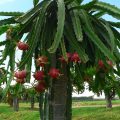

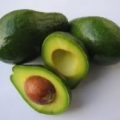
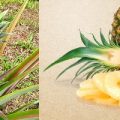
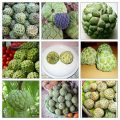
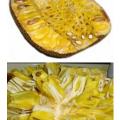

How can I get in touch with Southern Mindanao Integrated Agricultural research Center (SMIARC)?
where to get seeds please?